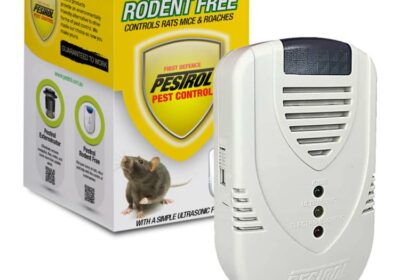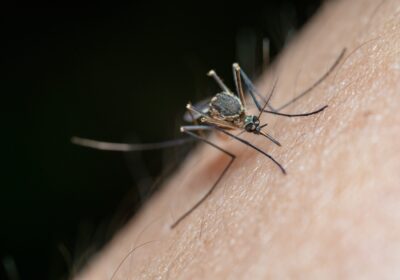Why Sonic Rodent Repellers work
Introduction to rodent control
Rodents are a common pest in Australia, and they can cause a significant amount of damage to homes and businesses. Rats and mice are known to carry a range of diseases, and they can also damage property by chewing through electrical wires, insulation, and even wooden structures. Fortunately, there are many rodent control products available that can help home owners in Australia tackle this problem and protect their properties.
Rodent control products are essential in Australia, especially during the colder months when rats and mice are looking for warmth and shelter. In addition to causing structural damage, rodents can also contaminate food and spread diseases such as leptospirosis, hantavirus, and salmonella. As such, it is important for home owners to take proactive steps to prevent infestations and address rodent problems as soon as they arise.
One of the most effective ways to control rodents is by using rodent control products. These products are designed to attract and kill rats and mice using a range of different methods, such as bait stations, traps, and ultrasonic devices. They can be used both inside and outside the home and can help to eliminate rodent infestations quickly and effectively.
There are many different types of rodent control products available, each with its own advantages and disadvantages. Bait stations are a popular option as they allow you to place bait in areas where rodents are likely to frequent, such as along walls and in dark corners. Bait stations are also tamper-proof, which is important if you have pets or children in the home.
Another option is traps, which can be used to capture rodents without harming them. Live traps can be used to catch mice and rats, which can then be released back into the wild. Snap traps are also effective, but they do require you to dispose of the rodent once it has been caught.
Ultrasonic devices are another popular option, as they emit high-frequency sound waves that are designed to repel rodents. These devices are often used in combination with other rodent control products, such as traps or bait stations, to create a multi-faceted approach to rodent control.
Ultimately, the type of rodent control product you choose will depend on the severity of your rodent problem and your personal preferences. Some home owners may prefer to use natural or organic rodent control products, while others may opt for more traditional methods such as bait stations or traps.
In addition to using rodent control products, there are also a number of other steps home owners can take to prevent rodent infestations. This includes sealing up any cracks or gaps in your home’s foundation, keeping food stored in sealed containers, and regularly cleaning up any food spills or crumbs.
Sonic rodent repellers

Sonic rodent repellers are devices designed to deter rodents such as mice and rats from entering or inhabiting a specific area. These devices work by emitting high-frequency sound waves that are unpleasant to rodents, causing them to seek out alternative locations to nest or feed. Sonic rodent repellers are often marketed as a humane and environmentally-friendly alternative to traditional rodent control methods such as traps and poisons. They can be used in a variety of settings, including homes, businesses, and agricultural operations. While some users report success with sonic rodent repellers, others are skeptical of their effectiveness and research on their efficacy is mixed.
II. How sonic rodent repellers work
Sonic rodent repellers emit high-frequency sound waves that are designed to be unpleasant to rodents. These sound waves typically range in frequency from 20,000 to 60,000 Hz, which is above the range of human hearing (typically around 20 Hz to 20,000 Hz).
The idea behind these devices is that the high-frequency sound waves will create an environment that is uncomfortable for rodents, causing them to avoid the area. Some manufacturers claim that the sound waves are so unpleasant to rodents that they will even leave the area entirely.
It’s important to note that while sonic rodent repellers are marketed as a humane alternative to traditional rodent control methods, they are still a form of pest control. The sound waves emitted by these devices may be unpleasant to rodents, but they are not harmful.
However, it’s worth keeping in mind that not all rodents may be affected by these devices. Some species of rodents may be less sensitive to high-frequency sound waves, and may be able to tolerate or even ignore them. Additionally, the effectiveness of these devices may be influenced by factors such as the size of the area being protected, the layout of the space, and the presence of obstacles that may interfere with the transmission of the sound waves.
The high-frequency sound waves emitted by sonic rodent repellers are designed to repel rodents in a few different ways.
First, these sound waves can be uncomfortable or even painful for rodents to hear. Rodents have a more acute sense of hearing than humans, and the high-pitched sound waves emitted by sonic rodent repellers may be particularly unpleasant to them. This discomfort can make the area where the repeller is located less desirable for rodents to inhabit or pass through.
Second, the sound waves emitted by these devices can disrupt rodents’ communication and navigation. Rodents use ultrasonic vocalizations to communicate with each other, and the high-frequency sound waves from a sonic repeller can interfere with their ability to do so. Additionally, rodents use their sense of hearing to navigate and locate food sources, and the presence of a loud, high-pitched sound can confuse and disorient them.
Finally, some sonic rodent repellers emit sound waves that are specifically designed to mimic the sounds of predators such as owls and snakes. Rodents are naturally wary of these predators, and the presence of their sounds can make the area seem more dangerous and less hospitable to rodents.
While some users report success with sonic rodent repellers, it’s worth noting that the effectiveness of these devices can vary depending on factors such as the size of the area being protected, the type of rodents present, and the layout of the space. Additionally, some studies have suggested that rodents can become habituated to the sound waves emitted by these devices over time, reducing their effectiveness.
IV. Other factors to consider
The effectiveness of sonic rodent repellers can be influenced by a variety of factors, including the size of the area being treated and the type of rodents present. Here are some of the factors that could influence their effectiveness:
- Size of the area: Sonic rodent repellers work by emitting high-frequency sound waves that are designed to repel rodents within a certain range. The range of these devices can vary depending on the model, but generally ranges from a few feet to several hundred square feet. For larger areas, multiple devices may be needed to effectively cover the space.
- Layout of the space: The layout of the space being treated can also affect the effectiveness of sonic rodent repellers. For example, if the space has a lot of obstacles such as walls, furniture, or other large objects, the sound waves emitted by the repeller may be blocked or disrupted, reducing their effectiveness. Additionally, if the space has multiple entry points or areas where rodents can hide, it may be difficult to completely repel all rodents from the space.
- Type of rodents: Different types of rodents may respond differently to the sound waves emitted by sonic repellers. For example, some species of rodents may be less sensitive to high-frequency sound waves than others, and may be able to tolerate or even ignore them. Additionally, some rodents may be more adaptable and persistent than others, and may be able to find ways to overcome the repeller’s effects.
- Duration of use: Some studies suggest that rodents can become habituated to the sound waves emitted by sonic repellers over time, reducing their effectiveness. To prevent habituation, it’s important to use the repeller continuously and to periodically move it to different locations within the treated area.
Sonic repellers are devices that emit high-frequency sound waves to repel pests, such as rodents, insects, and birds, from a certain area. While they can be an effective way to keep pests away, using them correctly is important to ensure their effectiveness. Here are some tips for using sonic repellers effectively:
- Choose the right repeller: There are different types of sonic repellers for different pests, so make sure you choose the one that is appropriate for the pests you want to repel. For example, a repeller designed for rodents may not be effective against birds.
- Place the repeller strategically: Sonic repellers work by emitting sound waves that pests find unpleasant, so it’s important to place them in areas where the pests are likely to be. For example, if you want to repel mice, place the repeller near areas where they are likely to enter, such as doors or windows.
- Use multiple repellers: For larger areas or to repel multiple types of pests, it’s often necessary to use multiple repellers. Placing them strategically throughout the area can help ensure that pests are effectively repelled.
- Keep the area clear: Sonic repellers work by emitting sound waves, so it’s important to keep the area clear of obstacles that could block the sound. For example, if you’re using a repeller to keep birds away from your garden, make sure there are no large trees or other obstacles blocking the sound waves.
- Use them consistently: Sonic repellers are not a one-time solution, and it’s important to use them consistently to keep pests away. Make sure to replace the batteries regularly, and keep an eye out for any signs that the repeller may not be working effectively.
- Combine with other pest control methods: While sonic repellers can be effective on their own, combining them with other pest control methods, such as traps or insecticides, can help ensure that pests are effectively repelled.










